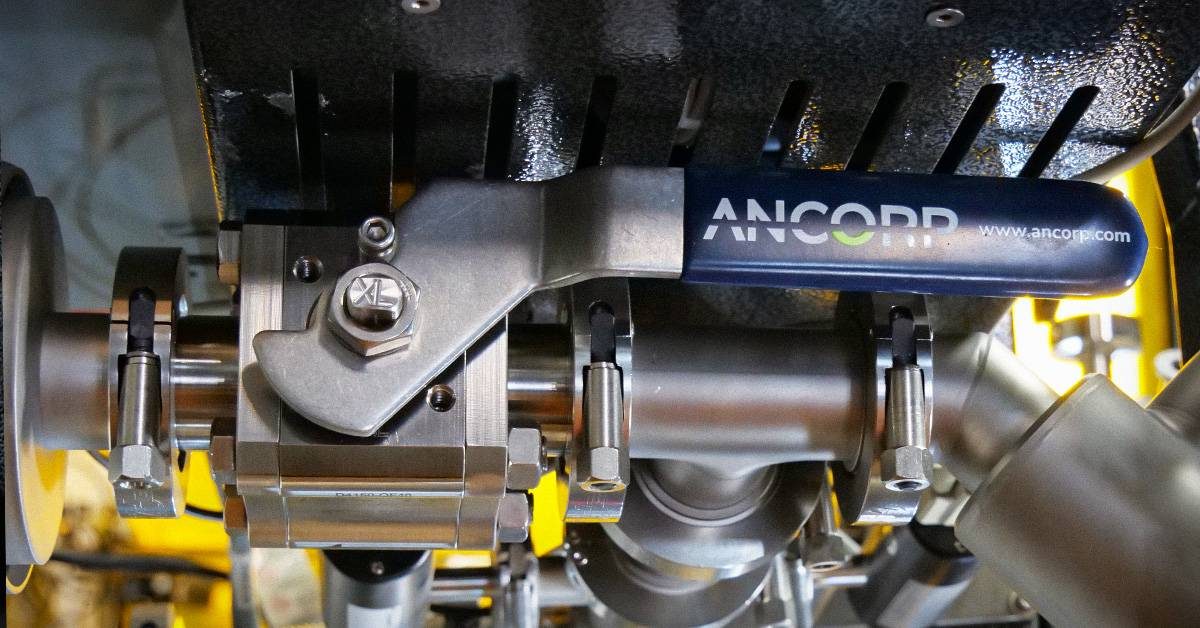Maximizing Semiconductor Subfab Efficiency with High Vacuum Ball Valves

Semiconductor Subfabs
The semiconductor industry has made remarkable progress in recent years, leading to the development of ever smaller and more powerful chips. However, these advancements would not have been possible without a clean room powered by an efficient subfab.
Cleanrooms play a critical role in semiconductor manufacturing, ensuring the cleanliness and integrity of the production environment. The range of process tools in the cleanroom is vast, and maintaining their functionality and cleanliness is essential to producing high-quality chips. The maintenance of the process tools in the cleanroom is essential to achieving this goal and most tools receive vacuum and abatement services in the subfab. An effective clean room creates an environment designed to minimize the introduction, generation, and retention of airborne particles during semiconductor manufacturing and is supported and often controlled by the subfab below the cleanroom.
Subfab systems are responsible for providing the necessary materials and utilities required to create semiconductor devices, as well as managing and treating the waste products generated during the manufacturing process. Deposition processes like metal-organic chemical vapor deposition (MOCVD) and ion-beam deposition (IBD) require a range of specialized utilities, such as gas and chemical delivery systems, vacuum systems, and temperature control systems.
The precursor gases delivered through these delivery systems can also be highly reactive and hazardous to both human health and the environment. The subfab must ensure that they are stored, transported, and delivered safely and effectively. Pumping and abatement systems in the subfab are responsible for the removal and treatment of waste gases and byproducts generated from deposition processes. This is made possible through the use of specialized vacuum components and valves.
Table of Contents
Ball Valves
An essential component to subfab processes is an isolation valve. They are used to control the flow of chemicals, gasses, and other substances used in the production of semiconductor devices. Valves also regulate the pressure and flow rates of these materials, ensuring that they are delivered accurately and efficiently.
ANCORP’s engineered solution for process challenges faced in the subfab is the Extended Life (XL) Ball Valve. Made from inert materials such as 316L stainless steel with PTFE seats, the valve offers flexibility for space constraints, has a self-cleaning action, and is resistant to corrosion. The ball valve is a desirable option due to its ability to solve space constraints within a subfab system. Ball valves come with port arrangement options such as the two-way and three-way ball valve, providing flexibility in the design and configuration of subfab systems.
Quick Facts
Features
· Straight-through, unimpeded flow
· Higher conductance than a comparable poppet valve
· Poppetless design has a less wetted surface
· 1/4 turn, quick actuation
· “Self-cleaning” action prevents deposition buildup
· Valves can be easily serviced with ANCORP’s standard maintenance kits
Additional Options Configurable to Meet System Requirements
· Port terminations
· Overall length
· Heater ready
· Fail-safe position
· Other o-ring materials and lubricants are available
High Conductance
ANCORP’s High Conductance (HC) high vacuum ball valve is a critical component in semiconductor manufacturing. This valve provides maximum conductance, which is important in maintaining high vacuum levels in the system. With improved smooth contours, a fully ported ball, and a reduced overall length two-piece 316L stainless steel body heat transfer capabilities are maximized between the valve and heating components. As heating demands differ across specific processes, body and stem seals for the HC valve can be changed to meet the needs of customer applications.
Overcoming Process Challenges
One of the biggest challenges in semiconductor fabrication is the deposition and buildup of byproducts, such as metal particles, on vacuum lines in subfab systems. This can cause reduced efficiency and eventual system failure if not managed properly.
Fortunately, ANCORP’s ball valve design can help tackle this issue. The valve ball is sealed and held in place by PTFE seats, and when the valve is actuated, it completes a self-cleaning function that reduces physical debris on the ball. If debris were to continue to build on the valve’s inner surface area, the valve would need to be serviced frequently. The issue of debris is also prevented by the ball valves ability to be heated, especially the high conductance valves. With high heat transfer capabilities, the valves reduce buildup by preventing condensation.
The challenge of frequent servicing is further mitigated by ANCORP’s patented stem seal design. The stem is fully stabilized, reducing potential leak pathways and improving valve actuation. This engineered solution extends stem seal life by ten times and reduces the need for valve maintenance by helping to ensure consistent production and minimize disruptions to the manufacturing process.
In subfab systems, the XL ball valve plays an essential role in providing effective vacuum isolation on the exhaust lines and vacuum lines of process tools, as well as in minimizing maintenance requirements and ensuring efficient and reliable semiconductor device production.
